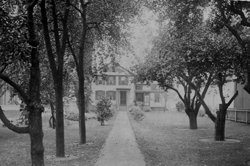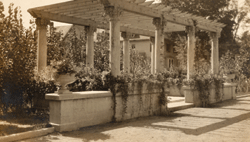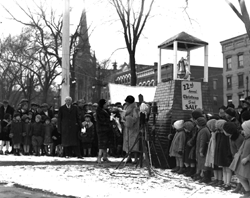
Bridge Street Cemetery Northampton Architecture Historic Markers 
|


Pulaski Park
 |
| Site of Pulaski Park as it looked in the 1890s |
During the late 18th century, the site of Pulaski Park was used extensively for public auctions and as a congregating place for horse traders. Public announcements were made there, and tradition has it that news of the British attack on Lexington and Concord was first heard in Northampton at this site. In the first half of the 19th century, this land was owned by Judge Joseph Lyman whose house stood opposite the park. The Lymans maintained a garden and cultivated flowering plants. By the 1880s, various buildings occupied the site, including the private home of William Prindle, a stove dealer, and a livery stable owned by Henry G. Holley.
 |
| The original Main Street Park about 1910 |
Between 1905 and 1907, the land passed from private to public ownership. Over $27,000 in contributions were raised to purchase the land for a city park and approximately $5,000 was designated for development. Main Street Park, as it was then called, opened in 1908 complete with a formal lawn and ornamental pergola designed by New York architect, Joseph Gabringer.
 |
| Grace Coolidge opens the Christmas Seal campaign in Pulaski Park in the 1930s. |
During the 20th century, various proposals calling for the use of the park site as a site for a new high school in the 1930s and for off-street parking in the 1950s were rejected. The park remained Main Street Park until 1945 when a monument to Revolutionary War hero Casimir Pulaski was moved from Legion Hall to the center of the park. The statue of General Pulaski, who served under Washington at Valley Forge and died in action at the Battle of Savannah, commemorates the Polish-American contribution to the City of Northampton.
Contents Historic Northampton.